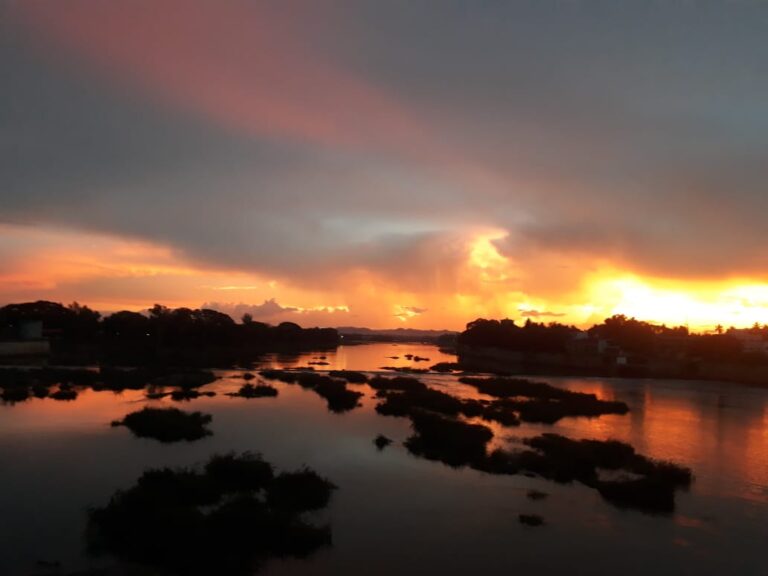
“Pure water is the world’s first and Foremost medicine”
The Thunga River is a river in Karnataka state, Southern India. The river is born in the Western Ghats on a hill known as Varaha Parvata at a place called Gangmoola. From here the river flows through two districts in Karnataka that is Chikmagaluru district and Shimoga district. It is 147 km long. And merges with Bhadra River at Koodli. The river is given the compound name Tungabhadra
Water is one of the most essential resources on earth without it there would be no life on earth. Thunga river is famous for the sweetness of its water. There is a common saying in the villages “Thunga Pana Ganga Sana” which means you must bathe in Ganga and drink from Thunga.
The villagers use the Thunga river water for drinking, bathing, washing and for their cattle. Agriculture is the major occupation across the basin. The major crops grow are paddy, jowar, sugarcane, cotton, and ragi
The river catchment includes a number of large and small units supporting industrial activities. Fishing is next major activity that supports more than 10,000 families. Brick making, potter’s etc. Are other livelihood options practiced along the basin. Millions of people survive on this water source, directly or indirectly. Hence river Tungabhadra is considered to be a life line of central Karnataka.
The importance of rivers around human habitations is well known. In olden days man was content to survive and exist with the basic needs. However, as civilization progressed his needs also increased. He began to crave for more luxuries and comfort and in his greed for these he began to destroy his surroundings indiscriminately. Nowadays, water flown in rivers are not clean as it used to be. As generations passed. The pollution increased
Largely the sources of pollution in Tungabhadra river are from agricultural run off, industrial effluents, sewage from urban settlements, mining activities and over exploitation of ground water. As agriculture is the main occupation in the basins. The use of fertilizer has increased over the year. Increase in fertilizer consumption has been raised to 700 tones in 2005. A lot usage of fertilizer and pesticides are leading to eutrophication and potential contamination. Hundreds of small and large scale industries release effluents into river directly without treating it. The amounts to billion of liters of sewage and effluents polluting the river as a result turning it into a drainage and dump yard
Over the years we have been hearing about the amount of pollution caused by humans but now it is important we understand the unprecedented damage done to nature. This threatens not only us but also aquatic life.
The industrial sewage inflow has affected the nearby villages in the basin. Harihara poly fibers have affected around 45 villages. People are exposed to foul smell and several other health implications. Washer men and fishermen who spent long hours in the river had experienced skin disease and other ailments. There was a case where around 13 fishermen were suffering from skin disease ‘Superficial folliculitis ʼ an inflammation of hair follicles. Even death of cattle.
Decline in fish species is another serious issue. There were nearly 120 species of fishes in Thunga river. Among them 28 species are threatened due to over exploitation and pollution. It is also stated that fish yeild decreased by 50% over 10 years. The list of impacts caused by pollution are never ending. This is a alarming time. Thunga river is not only a boon to life it has become bane to life for villagers.
In order to restore Thunga river ecosystem we need to start taking initiative that will help Thunga river recover from the damages that has been done over the years we need to adopt systematic approaches like organic farming, sustainable fishing
It is just a beginning. A lot more needs to be done and the government has to take a serious note of saving rivers and adopt permanent solutions to prevent the chouking of the rivers by weed and pollutants. To make the process more participatory, there is also need to create awareness among people from the different walks of life.